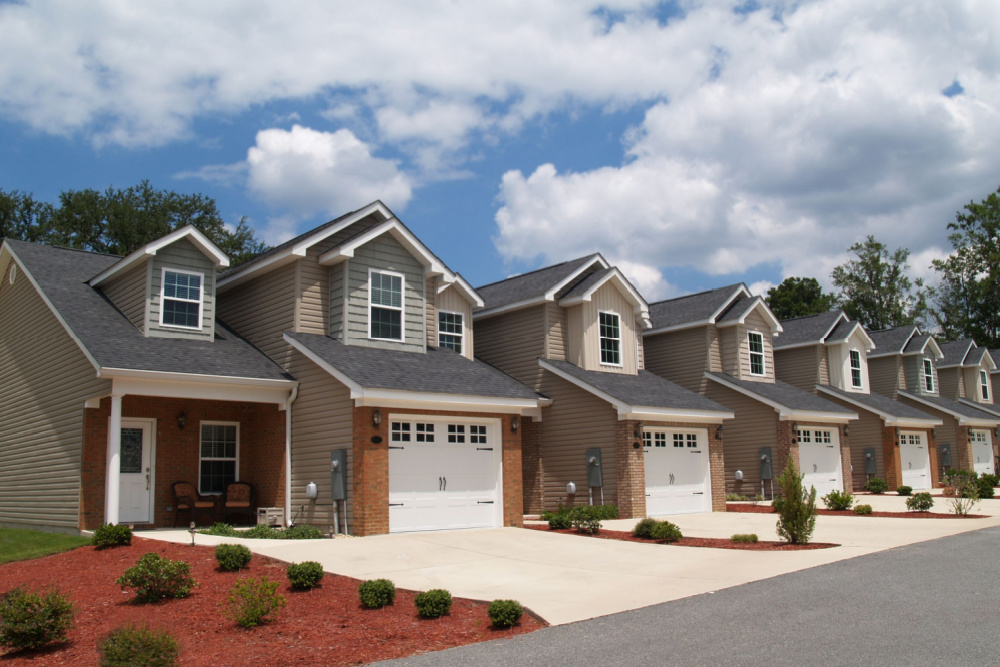Many of us envision spending our golden years in a retirement community, relaxing and making new memories, but we often don’t think of the financial costs involved. Whether you’re planning for your own retirement or helping a loved one research their options, it’s crucial to have a clear understanding of the financial aspects of living in a retirement community before making a decision. In this article, we’ll provide a comprehensive breakdown of retirement community costs, looking into the different factors that can contribute to pricing and exploring various ways to finance your dream retirement.
What is a retirement community?
A retirement community, also known as a “senior living community,” is a housing option designed for older individuals who are retired or nearing retirement. These communities provide residents with a renewed sense of purpose and freedom, relieving them of everyday responsibilities such as cooking, housekeeping, laundry, and maintenance.
One of the great things about retirement communities is that they bring seniors together in a community of their peers, creating a sense of belonging while encouraging social connections. Retirement communities also offer amenities tailored to the needs of older adults, like entertainment programs, dining options, cleaning services, transportation, and even healthcare services. The goal of retirement communities is to provide a safe, supportive, and engaging environment where seniors can truly enjoy their retirement years.
Types of retirement communities
There are many different types of retirement communities, each offering its own amenities and services based on the needs of its residents. No matter what you or your loved one are looking for, it’s important to explore available options and carefully consider which aligns best with your needs and desired lifestyle.
Independent living communities
Assisted living facilities and nursing homes
Assisted living facilities are retirement communities designed for seniors who need assistance with daily activities but still want to maintain some level of independence. These facilities offer private or semi-private apartments and provide services such as personal care assistance, medication management, meals, and social activities. Staff is available 24/7 to provide support and respond to emergencies.
Nursing homes, which are also referred to as skilled nursing facilities, are for seniors with significant medical needs who require round-the-clock care. This type of housing typically has a team of healthcare professionals on staff, including nurses and certified nursing assistants, to provide medical care, rehabilitative services, and support for complex conditions.
Both assisted living facilities and nursing homes aim to provide a safe and comfortable environment for older adults who require additional assistance or specialized care. The level of services provided can vary, so it’s important to research options to find the best one for you or your loved one.
CCRCs
Continuing care retirement communities (CCRCs) offer independent living options, assisted living, and skilled nursing care within the same community, allowing residents to transition seamlessly as their needs change. CCRCs typically require an entrance fee and monthly fees, providing residents with the assurance that their future care needs will be met without the need to relocate. This type of retirement community appeals to those who value long-term planning and the convenience of having various levels of care available in one location.
How much do retirement communities cost?
The cost of senior living communities can vary greatly depending on factors such as location, type of community, level of care, amenities offered, accommodation size and type, and more. On average, monthly costs for an independent community are $3,170 nationwide. However, these figures are estimates, and actual costs can differ based on individual circumstances and the specific retirement community chosen. Thorough research and understanding of the cost structure, including potential additional expenses, are crucial for budgeting effectively and making informed decisions.
Location
The location of a retirement community plays a significant role in determining its cost. It’s no secret that different regions, cities, and even neighborhoods can have a considerable impact on the price tag. For instance, retirement communities in major cities or sought-after retirement destinations tend to have higher costs due to steeper property values, regional labor costs, and local demand. Moreover, areas with a higher cost of living often coincide with elevated healthcare expenses, further contributing to the overall cost of retirement communities. When exploring and selecting a retirement community, take the location factor into account, as it can greatly influence affordability.
Type of Housing
The type of housing available in a retirement community is another major aspect that affects the cost. As mentioned, retirement communities offer diverse housing options, from cozy apartments and condos to charming cottages and spacious single-family homes. The size, layout, and amenities of the housing units can vary, with larger or more luxurious accommodations generally leading to higher costs. Some communities even offer different tiers of housing, such as basic units versus upgraded or premium units, each with its own corresponding pricing structure.
Community Fees
Community fees, often called entrance or initiation fees, are one-time payments that some retirement communities require upon joining or moving in. The purpose of these fees depends on the specific community and its financial structure. For example, they may be allocated to cover the expenses associated with community infrastructure, amenities, and shared spaces. In certain cases, these fees can be partially refundable when residents move out or utilized to offset future healthcare costs within the community. The amount of community fees can differ significantly based on factors like the size and type of accommodation, location, and offered amenities. When considering retirement communities, be sure to ask about possible community fees and how they contribute to a community’s overall cost.
Associated medical costs
Depending on the type of retirement community and the level of care provided, there may be additional expenses related to healthcare. In assisted living or nursing home settings, residents might incur charges for healthcare services, medication management, personal care assistance, and specialized therapies. The specific care needs of each individual can influence these costs. Take the time to research the healthcare services and associated expenses offered by the retirement community, and consider the potential changes in medical needs over time. Exploring options such as long-term care insurance or government assistance programs can help individuals effectively plan and budget for these medical costs so that there are no surprise charges.
Ways to pay retirement community costs
Navigating the financial aspects of retirement community costs requires exploring various avenues to potentially fund your stay. Let’s explore some of the most common ways people cover the costs of living in a retirement community.
1. Out of pocket
One way to cover retirement community costs is through out-of-pocket payments, utilizing personal savings, investments, or liquid assets. This approach gives individuals the flexibility and independence to manage their finances, enabling them to pay directly for retirement community expenses without relying on external funding sources. Out-of-pocket payments are especially suitable for those with ample personal savings or retirement funds, offering the advantage of maintaining control over their financial decisions. Careful consideration of the long-term sustainability of these funds is essential to ensure that retirement savings can cover ongoing retirement community expenses while offering a financial cushion for the future.
2. Sell your life insurance
Another avenue to explore when seeking ways to cover retirement community costs is selling your life insurance policy. In a life settlement, policyholders can sell their life insurance policy to a third-party investor in exchange for a lump sum payment. This option is typically available to individuals that have a life insurance policy with a value exceeding their current needs, or who find it challenging to afford the premiums. By selling the policy, policyholders receive immediate funds that can be utilized to cover the expenses associated with retirement communities. Seeking guidance from a reputable life settlement company can provide valuable insights, helping individuals determine if this option suits their circumstances.
3. Long-term care insurance
Long-term care insurance can be a valuable financial tool to assist with covering the costs associated with extended care, including expenses related to retirement communities. This type of insurance is typically purchased when individuals are younger and in good health, as premiums tend to be more affordable during that stage. Long-term care insurance provides coverage up to a predetermined dollar amount for a specified period. However, it’s important to note that if care expenses surpass the policy’s coverage limits or if the individual requires care for a longer duration, they would need to personally cover the remaining costs or explore alternative payment methods.
4. VA benefits
Veterans Administration (VA) benefits can be a valuable financial resource for eligible veterans seeking assistance with retirement community costs. The VA provides various programs that help cover the expenses associated with long-term care, including those within retirement communities. One such program is the Aid and Attendance (A&A) pension program, which provides additional funds to eligible veterans and surviving spouses who require help with daily living activities. To qualify for VA benefits, veterans must meet specific eligibility criteria, including service-related disabilities, income limitations, and other qualifications. By applying for VA benefits and working closely with the VA or a veterans service organization, individuals can navigate the application process more easily and maximize the financial support available to them.
5. Medicaid and Medicare
Medicaid and Medicare are government programs that can serve as valuable sources of financial assistance to cover retirement community costs. Medicaid, a state and federally-funded program, primarily supports individuals with limited income and assets. Depending on eligibility and state regulations, Medicaid may cover long-term care expenses, including those incurred in assisted living or nursing homes. On the other hand, Medicare, a federal health insurance program, primarily serves individuals aged 65 and older. While Medicare typically does not cover long-term care costs in retirement communities, it may provide limited coverage for medically necessary services or short-term stays in skilled nursing facilities following a hospitalization.
Helping you pay for retirement
Ready to downsize, simplify your life, and make the most of your retirement years with fewer worries and more time for the things you love? A retirement community is a great place to start — and Harbor Life Settlements can help get you there.
If you need help paying for the cost of senior care, Harbor Life Settlements can help you understand the cash value of your life insurance policy and determine if you’re ready to sell. We invite you to speak with us today or request your free policy estimate now, so you can be on your way to living in the perfect retirement community.








